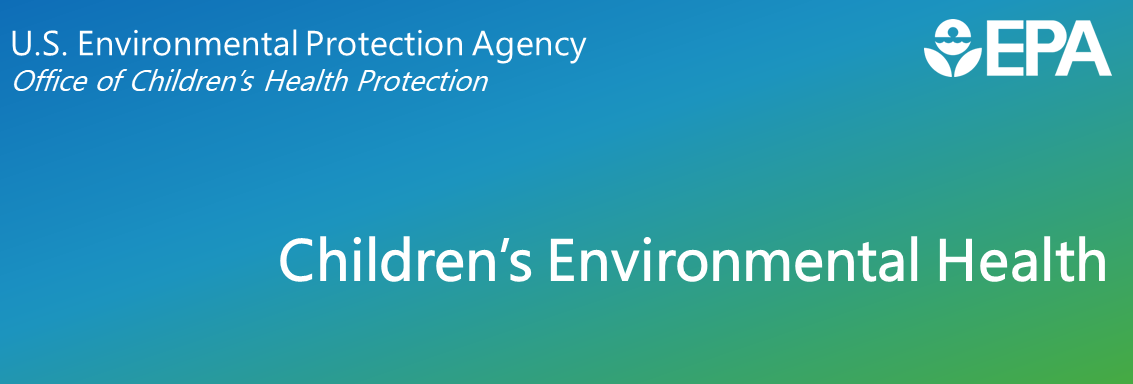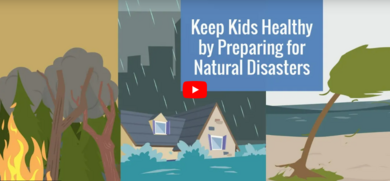Issued: Feb 28, 2024 (9:24am EST)
If you wish to unsubscribe please do so here: https://epa.mediaroom.com/index.php?s=20300&unsub=1&hide_page_content=1
EPA Announces Bipartisan Infrastructure Law Funds for Cleanup at Scorpio Recycling Superfund Site in Puerto Rico
EPA Announces Bipartisan Infrastructure Law Funds for Cleanup at Scorpio Recycling Superfund Site in Puerto Rico
Contact: Carlos Vega, (646) 988-2996, vega.carlos@epa.gov
NEW YORK (February 27, 2024) - Today, the U.S. Environmental Protection Agency (EPA) announced that the Scorpio Recycling, Inc. Superfund site in Toa Baja, Puerto Rico is among the over 100 sites across the country getting more than $1 billion for cleanup projects as part of President Biden's Investing in America agenda. This funding is made possible by the President's Bipartisan Infrastructure Law and will launch new cleanup projects at 25 Superfund sites and continue other cleanups at over 85 Superfund sites.
Thousands of contaminated sites exist nationally due to hazardous waste being dumped, left out in the open, or otherwise improperly managed. These sites can include toxic chemicals from manufacturing facilities, processing plants, landfills and mining, and can harm the health and well-being of local communities in urban and rural areas. More than one in four Black and Hispanic Americans live within three miles of a Superfund site.
"People living in Puerto Rico have seen firsthand how transformative the Superfund program can be for communities," said Regional Administrator Lisa F. Garcia. "This investment in America and in Puerto Rico builds on the historic progress we have already made in recent years to ensure that communities living near the most serious uncontrolled, or abandoned contaminated sites get the protections they deserve."
"The Biden-Harris Administration continues its steadfast support for Puerto Rico in our collaborative efforts to protect our natural resources. Following last week's announcement of $63.3 million from the EPA for water resources and infrastructure work, today we are pleased to announce another allocation for cleanup at the Scorpio Recycling, Inc Superfund site. This area, which was a metal recycling facility until 2010 in Toa Baja, is one of the 100 sites across the Nation that will receive more than $1 billion from the Bipartisan Infrastructure Law. The $3.1 million that EPA is allocating to Puerto Rico will be used to further the cleaning efforts and address contamination at the site. Once again, actions speak louder than words, and my administration will continue working with the federal government to protect our environment and the health of all American citizens living in Puerto Rico, "said Governor Pedro R. Pierluisi.
The Scorpio Recycling Inc. site in Toa Baja, Puerto Rico was a 6-acre metal recycling facility that bought all types of metal and sold it to foundries in the United States, Brazil, Spain and Japan. The facility began operating in 1972. The site was poorly operated, and the soil became contaminated with acids, lead and other metals. EPA has addressed the immediate risks by excavating and removing battery casings, miscellaneous debris, and stabilized soil contamination on portions of the site by treating the soil with trisodium phosphate as a temporary mitigation measure to immobilize the lead.
EPA BIL funding will be used to install a gravel cover in an industrial area and soil cover in a conservation area of the site. This work which has an estimated value of $3.1 million and will be the last work planned to address contamination at this site. The work is expected to be fully completed in 2028.
Today's investment is the final wave of funding from the $3.5 billion allocated for Superfund cleanup work in the President's Bipartisan Infrastructure Law. So far, EPA has deployed more than $2 billion for cleanup activities at more than 150 Superfund National Priorities List sites.
Thanks President Biden's commitment to addressing legacy pollution and improving public health, EPA has been able to provide as much funding for cleanup work in the past two years as it did in the previous five years while delivering on President Biden's Justice40 Initiative, which set a goal to deliver 40% of the overall benefits of certain federal investments to disadvantaged communities that are marginalized by underinvestment and overburdened by pollution.
EPA is committed to advancing environmental justice and incorporating equity considerations into all aspects of the Superfund cleanup process. Thus far, nearly 80% of the funding from the Bipartisan Infrastructure Law has gone to sites in communities with potential environmental justice concerns. Out of the 25 sites to receive funding for new cleanup projects, more than 75% are in communities with potential environmental justice concerns based on data from EJSCREEN.
President Biden's Investing in America agenda is restoring the health and economic vitality of communities that have been exposed to pervasive legacy pollution. The historic investment made by the Bipartisan Infrastructure Law strengthens every part of the Superfund program, making a dramatic difference in EPA's ability to tackle threats to human health and the environment. In addition to funding cleanup construction work, the investment is enabling EPA to increase funding for and accelerate essential work needed to prepare sites for construction and to ensure communities are meaningfully involved in the cleanup process. In 2023, EPA continued to fund Superfund pre-construction activities such as remedial investigations, feasibility studies, remedial designs, and community involvement at double pre-Bipartisan Infrastructure Law levels.
In 1980, Congress passed the Comprehensive Environmental Response, Compensation and Liability Act (CERLCA), known as Superfund. The law gave EPA the authority and funds to hold polluters accountable for cleaning up the most contaminated sites across the country. When no viable responsible party is found or cannot afford the cleanup, EPA steps in to address risks to human health and the environment using funds appropriated by Congress, like the funding provided by the Bipartisan Infrastructure Law.
To see a list of the 25 sites to receive funding for new cleanup projects, visit EPA's Superfund webpage.
To see highlights from the first two years of Bipartisan Infrastructure Law funding at Superfund sites, visit EPA's Cleaning Up Superfund Sites: Highlights of Bipartisan Infrastructure Law Funding website.
For more information about EPA's Superfund program, visit EPA's Superfund website.
Follow EPA Region 2 on X and visit our Facebook page. For more information about EPA Region 2, visit our website.
24-18
La EPA anuncia fondos de la Ley Bipartidista de Infraestructura para limpieza en el Lugar Superfondo de Scorpio Recycling en Puerto Rico
Contacto: Carlos Vega, (646) 988-2996, Vega.Carlos@epa.gov
NUEVA YORK (27 de febrero de 2024) - La Agencia Federal de Protección Ambiental de los Estados Unidos (USEPA) anunció hoy que el lugar Superfondo Scorpio Recycling, Inc. en Toa Baja, Puerto Rico se encuentra entre más de 100 lugares en todo el país que reciben más de mil millones de dólares para proyectos de limpieza como parte de la "Investing in America" del presidente Biden. Estos fondos son posibles gracias a la Ley Bipartidista de Infraestructura (BIL, por sus siglas en inglés) del presidente y lanzará nuevos proyectos de limpieza en 25 lugares Superfondo, continuando con otras limpiezas en más de 85 lugares Superfondo.
Existen miles de lugares contaminados en todo el país debido a que desechos peligrosos se vierten, se dejan a la intemperie o se manejan de otros modos indebidos. Estos lugares pueden incluir sustancias químicas tóxicas de instalaciones manufactureras, instalaciones procesadoras, rellenos sanitarios y minería, con el potencial de perjudicar la salud y el bienestar de las comunidades locales en áreas urbanas y rurales. Más de uno de cada cuatro estadounidenses negros e hispanos viven dentro de un radio de tres millas de un lugar Superfondo.
"La gente que vive en Puerto Rico ha visto directamente lo transformador que puede ser el programa Superfondo para las comunidades", señaló Lisa F. García, administradora regional de la EPA. "Esta inversión en Estados Unidos y en Puerto Rico se basa en el progreso histórico que ya hemos logrado en años recientes para asegurar que las comunidades que viven cerca de los lugares contaminados, de manera seriamente descontrolada, o abandonados reciban las protecciones que merecen."
"La Administración Biden-Harris sigue demostrando su firme apoyo a Puerto Rico en nuestros esfuerzos colaborativos para la protección de los recursos naturales en la Isla. Luego del anuncio de la semana pasada sobre la asignación de $63.3 millones para el trabajo en nuestra infraestructura de agua potable, hoy nos place anunciar otra asignación para la limpieza localizada en el área de la antigua instalación Scorpio Recycling, Inc., perteneciente al listado del Programa Superfondo. Esa área, la cual fue una planta de reciclaje de metales en Toa Baja hasta el 2010, es uno de los más de 100 lugares en toda la Nación que recibirán fondos de los más de $1,000 millones del BIL. Los $3.1 millones que la EPA destinó para Puerto Rico se utilizarán para rectificar la contaminación y continuar la limpieza en esta última etapa de la obra. Nuevamente, queda demostrado que las acciones hablan más que las palabras, y mi administración continuará trabajando con el gobierno federal para proteger nuestro medioambiente y la salud de todos los ciudadanos que residen en Puerto Rico," destacó el gobernador Pedro R. Pierluisi.
El lugar de Scorpio Recycling Inc. en Toa Baja, Puerto Rico era una instalación de reciclaje de metales de 6 cuerdas que compraba todo tipo de metal y lo vendía a fundidoras en los Estados Unidos, Brasil, España y Japón. La instalación comenzó sus operaciones en 1972. El lugar era mal administrador, y contaminaron el suelo con ácidos, plomo y otros metales. La EPA remedió los riesgos inmediatos al excavar y eliminar armazones de baterías y escombros, y estabilizar la contaminación en partes del lugar tratando el suelo con fosfato trisódico como medida provisoria de mitigación destinada a inmovilizar el plomo.
Los fondos del BIL de la EPA se utilizarán para instalar una cubierta de grava en un área industrial y una cubierta de tierra en un área de conservación del lugar. Este trabajo se estima que tendrá un costo de $3.1 millones y será el último trabajo planificado para remediar la contaminación en este lugar. Se espera que el trabajo termine en 2028.
Dicha inversión es la última oleada de fondos de los $3,500 millones asignados por BIL del presidente Biden para trabajos de limpieza de Superfondo. Hasta ahora, la EPA ha desplegado más de $2 mil millones para actividades de limpieza en más de 150 lugares Superfondo en la Lista Nacional de Prioridades. Gracias al compromiso del presidente Biden para atender la contaminación existente y mejorar la salud pública, la EPA ha podido aportar todos estos fondos para trabajo de limpieza en los últimos dos años; tal como lo hizo en los últimos cinco años gracias a la Iniciativa Justice40 del presidente Biden. La iniciativa Justice40 fijó una meta de aportar el 40% de los beneficios generales de ciertas inversiones federales a comunidades desventajadas que se encuentran marginadas por la escasa inversión y sobrecargadas por la contaminación.
La EPA está comprometida a avanzar la justicia ambiental e incorporar consideraciones de equidad en todos los aspectos del proceso de limpieza de lugares Superfondo. A la fecha, casi el 80% de los fondos del BIL se ha destinado a lugares en comunidades con posibles casos de justicia ambiental. De los 25 lugares que recibirán fondos para nuevos proyectos de limpieza, más del 75% están en comunidades con preocupaciones potenciales de justicia ambiental según datos de EJSCREEN.
La agenda Invest in America del presidente Biden procura restaurar la salud y la vitalidad económica de comunidades que han estado expuestas a una contaminación existente generalizada. La inversión histórica efectuada por el BIL fortalece cada parte del programa Superfondo, haciendo una diferencia enorme en la capacidad de la EPA para enfrentar amenazas a la salud humana y el medioambiente. Además de financiar obras de construcción para limpieza, la inversión permite que la EPA aumente los fondos y acelere trabajo esencial necesario para preparar los lugares para la construcción y asegurar que las comunidades participen de manera significativa en el proceso de limpieza. En 2023, la EPA costeó y duplicó las actividades de Superfondo previas a la etapa construcción, tales como investigaciones de remedios, estudios de viabilidad, diseños de remedio y participación comunitaria gracias al BIL.
En 1980, el Congreso promulgó la Ley de Responsabilidad, Compensación y Recuperación Ambiental (CERCLA), conocida como Superfondo. La ley dio a la EPA la autoridad y los fondos para responsabilizar a quienes causen la contaminación y que estos limpien los lugares más contaminados en todo el país. Cuando no se encuentra ninguna parte responsable viable o si esta no puede costear la limpieza, la EPA interviene para atender los riesgos inmediatos a la salud humana y al medioambiente usando fondos asignados por el Congreso, como el financiamiento provisto por el BIL.
Para ver una lista de los 25 lugares que recibirán fondos para nuevos proyectos de limpieza, visite: https://www.epa.gov/Superfondo/Superfondo-sites-new-construction-projects-receive-bipartisan-infrastructure-law-funding
Para ver hitos de los primeros dos años de la Ley Bipartidista de Infraestructura en los lugares Superfondo, visite el lugar web de la EPA Limpieza de lugares Superfondo: Hitos de los fondos de la Ley Bipartidista de Infraestructura.
Para obtener más detalles sobre el programa Superfondo de la EPA, visite el lugar web Superfondo de la EPA.
Siga a la Región 2 de la EPA en X y visite nuestra página en Facebook. Para obtener más información sobre la Región 2 de la EPA, visite nuestro lugar web.
24-18SP
For further information: Contact: Carlos Vega, (646) 988-2996, vega.carlos@epa.gov
To unsubscribe or change your settings click here:
https://epa.mediaroom.com/index.php?s=subscribe&code=ueUXGZK7VHmydxkBCBM_o9XpfYa7Vf15rw






